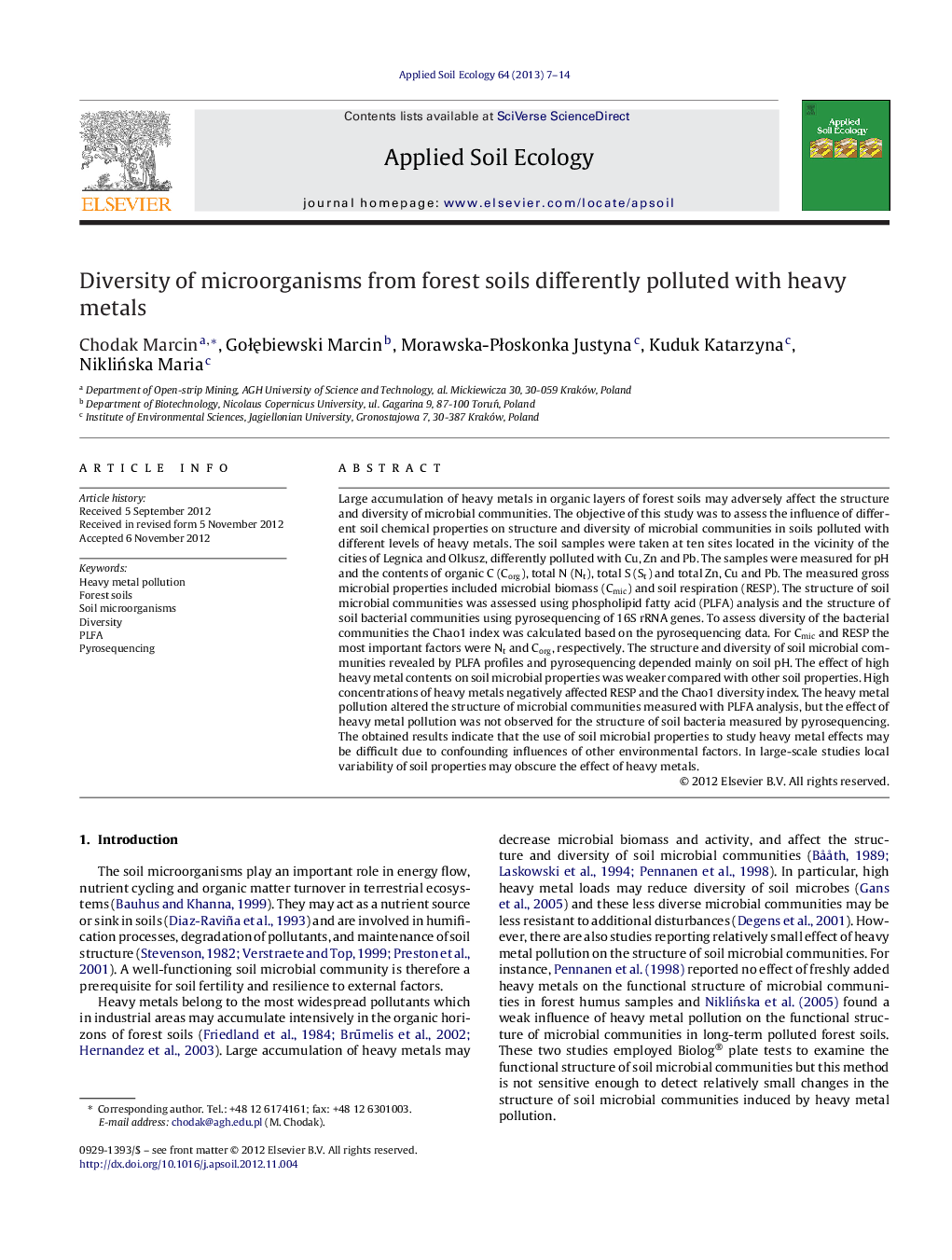| Article ID | Journal | Published Year | Pages | File Type |
|---|---|---|---|---|
| 4382451 | Applied Soil Ecology | 2013 | 8 Pages |
Large accumulation of heavy metals in organic layers of forest soils may adversely affect the structure and diversity of microbial communities. The objective of this study was to assess the influence of different soil chemical properties on structure and diversity of microbial communities in soils polluted with different levels of heavy metals. The soil samples were taken at ten sites located in the vicinity of the cities of Legnica and Olkusz, differently polluted with Cu, Zn and Pb. The samples were measured for pH and the contents of organic C (Corg), total N (Nt), total S (St) and total Zn, Cu and Pb. The measured gross microbial properties included microbial biomass (Cmic) and soil respiration (RESP). The structure of soil microbial communities was assessed using phospholipid fatty acid (PLFA) analysis and the structure of soil bacterial communities using pyrosequencing of 16S rRNA genes. To assess diversity of the bacterial communities the Chao1 index was calculated based on the pyrosequencing data. For Cmic and RESP the most important factors were Nt and Corg, respectively. The structure and diversity of soil microbial communities revealed by PLFA profiles and pyrosequencing depended mainly on soil pH. The effect of high heavy metal contents on soil microbial properties was weaker compared with other soil properties. High concentrations of heavy metals negatively affected RESP and the Chao1 diversity index. The heavy metal pollution altered the structure of microbial communities measured with PLFA analysis, but the effect of heavy metal pollution was not observed for the structure of soil bacteria measured by pyrosequencing. The obtained results indicate that the use of soil microbial properties to study heavy metal effects may be difficult due to confounding influences of other environmental factors. In large-scale studies local variability of soil properties may obscure the effect of heavy metals.
► The pH had the strongest effect on diversity and structure of soil microbes. ► Heavy metal pollution negatively affected soil bacterial diversity. ► PLFA pattern of soil microbial communities was affected by heavy metal pollution.
